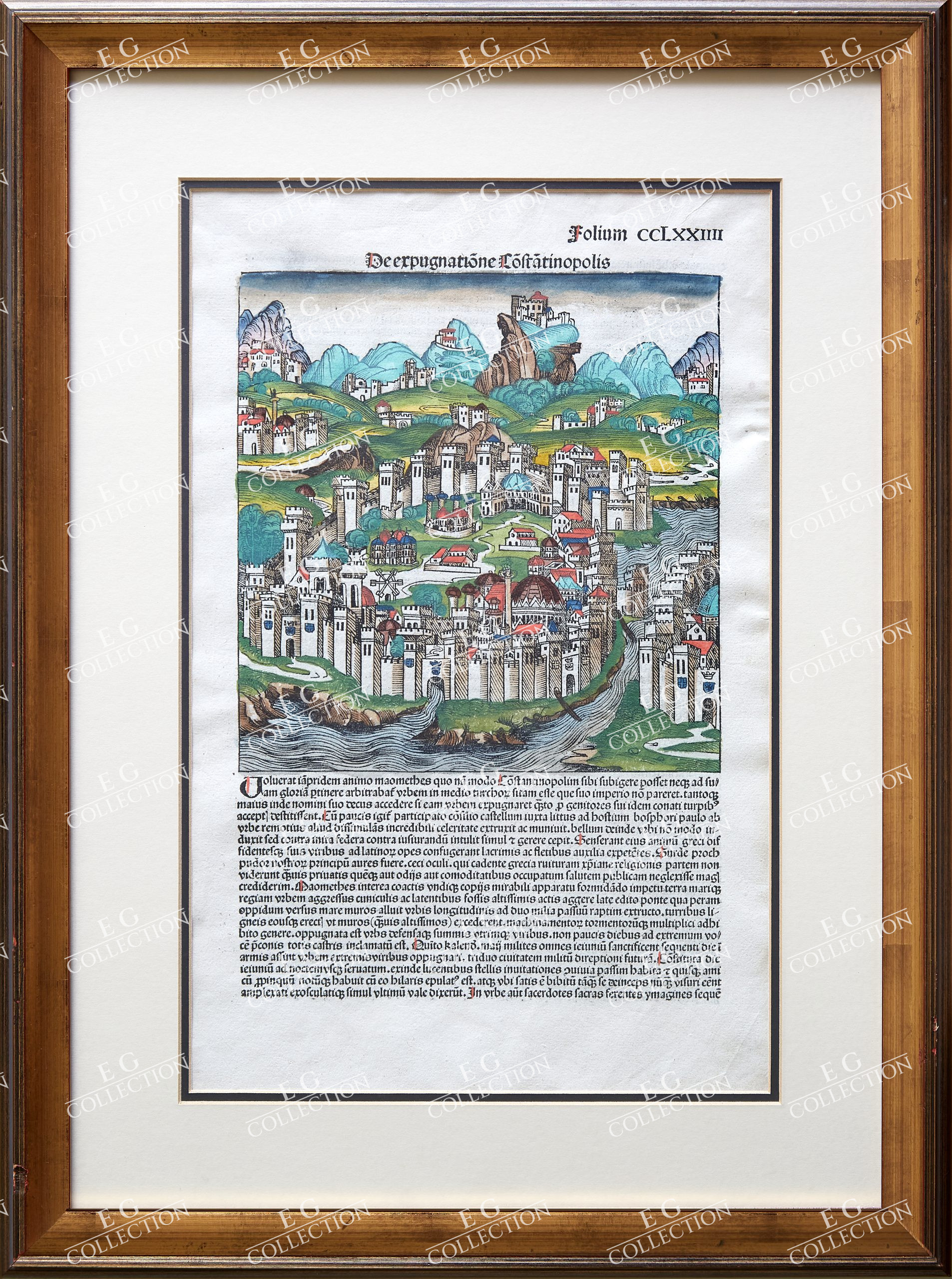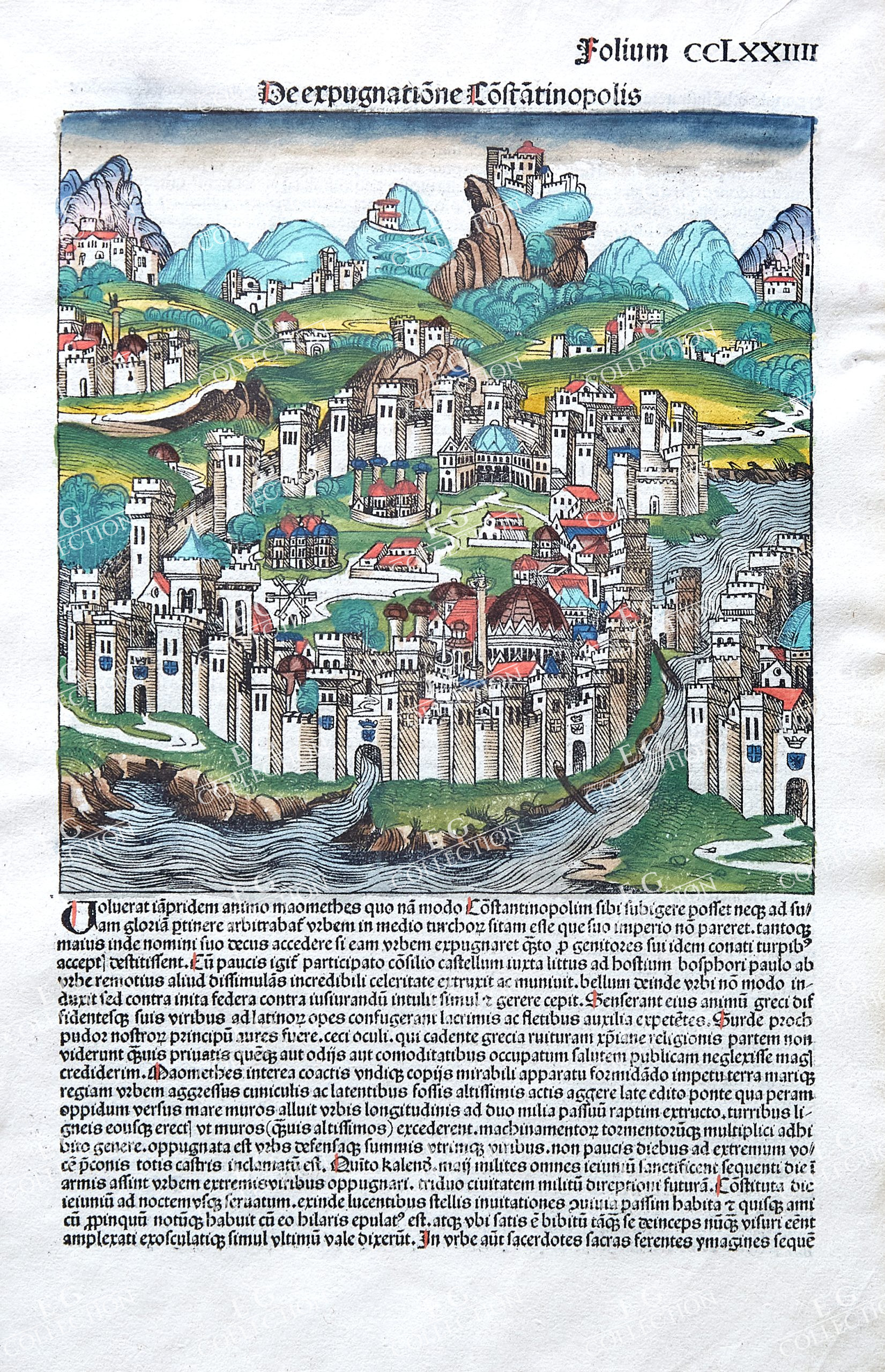SCHEDEL
DE EXPUGNATİONE CONSTANTİNOPOLİS
Folium CCLXXIIII
SCHEDEL Hartmann (1440-1515)
CA 1493, Nuremberg
36 x 22,5 cm Hand Colored, Framed
Hartmann Schedel (1440 -1515) settled in Nuremberg 1484 He published the famous Nuremberg Chronicle 1493 Schedel’s library has been sold in 1552 to Hans Jacob Fugger Schedel’s Nuremberg Chronicle must have been one of the most popular of incunables judging by the number of surviving copies Some 800 copies of the Latin edition have been traced and 400 of the German This is not surprising considering that this compilation of sacred and profaned history was the most elaborate printed book of its time illustrated with more than 1800 woodcuts Among these were a number of double-page city views a folding map of the world and another of northern and central Europe.
The woodblock cutters were Michael Wolgemut, the well-known teacher of Albrecht Dürer, and his stepson Wilhelm Pleydenwurff. Wohlgemut was Albrecht Dürer’s tutor between 1486-90 and recent scholarship has shown, Albrecht Dürer may also have collaborated, since some of the cuts bear a remarkably close resemblance to the Apocalypse illustrations. The offered woodcut is one of the oldest authentic plans of Istanbul and realistically the only large format 15th Century view obtainable to collectors; History: Constantinople was the capital city of the Roman and Byzantine (330 ?1204 and 1261?1453), the Latin (1204?1261), and the Ottoman (1453?1922) empires. It was reinaugurated in 324 AD at ancient Byzantium, as the new capital of the Roman Empire by Emperor Constantine the Great, after whom it was named, and dedicated on 11 May 330.In the 12th century, the city was the largest and wealthiest European city and it was instrumental in the advancement of Christianity during Roman and Byzantine times. After the loss of its territory, the Eastern Roman (Byzantine) Empire was reduced to just its capital city and its environs, eventually falling to the Ottomans in 1453. Following the Muslim conquest, the former bastion of Christianity in the east, Constantinople, was turned into the Islamic capital of the Ottoman Empire, under which it prospered and flourished again. After the founding of the modern Republic of Turkey the successor state of the Ottoman Empire the city was renamed Istanbul in 1923. Istanbul is probably the Turkish modification of the ancient Greek. This interpretation seems conclusive, because those who spoke colloquially “the city” in late antiquity and the early Middle Ages in the Eastern Roman Empire generally meant Constantinople, which, with its five hundred thousand inhabitants and its mighty walls, could not be compared to any other city in a wide area .
$ 2.000,00





 No products in the cart.
No products in the cart.